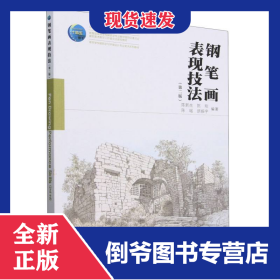
结构动力学(英文版)
①全新正版,现货速发,7天无理由退换货②天津、成都、无锡、广东等多仓就近发货,订单最迟48小时内发出③无法指定快递④可开电子发票,不清楚的请咨询客服。
¥ 29.87 5.2折 ¥ 58 全新
库存2件
浙江嘉兴
认证卖家担保交易快速发货售后保障
作者编者:周思达//(比)沃德·海伦//刘莉
出版社北京理工大学
ISBN9787568231008
出版时间2016-09
装帧其他
开本其他
定价58元
货号3733906
上书时间2024-10-14
- 在售商品 暂无
- 平均发货时间 17小时
- 好评率 暂无
- 最新上架
商品详情
- 品相描述:全新
- 商品描述
-
目录
1 Introduction to Structural Dynamics
1.1 Essential Characteristics and Basic Assumptions
1.1.1 Essential Characteristics
1.1.2 Basic Assumptions in Structural Dynamics of This Book
1.2 Missions of Structural Dynamics
1.2.1 Response Analysis
1.2.2 Inverse Problem of Type I: System Identification
1.2.3 Inverse Problem Type II: Load Identification
1.2.4 Vibration Control
1.3 Types of Dynamic Loads
1.3.1 Periodic Load
1.3.2 Impulsive Load
1.3.3 Random Load
1.4 Formulation of the Equations of Motion
1.4.1 Direct Equilibration Using d'Alembert's Principle
1.4.2 Variational Approach
1.5 Continuous and Discrete Structural Systems
References
2 Time-Domain Analysis of Continuous Systems
2.1 Free Transverse Vibration of Strings
2.2 Free Axial Vibration of Elastic Rods
2.3 Free Torsional Vibration of Cylinder Rods
2.4 Free Transverse Vibration of Euler-Bernoulli Beams
2.4.1 Simple Supported Beams
2.4.2 Cantilever Beams
2.4.3 Fixed-Fixed Beams
2.4.4 Free-Free Beams
2.5 Free Transverse Vibration of Rectangular Thin Plates
2.5.1 Kinematic Description
2.5.2 Equilibrium Equation
2.5.3 Boundary Conditions
2.5.4 Solutions of Rectangular Thin Plates with Simple-supported Edges
2.6 Some Properties of Natural Modes
2.6.1 Orthogonality of Mode Shapes
2.6.2 Modal Scaling
2.6.3 Expansion Theorem
2.6.4 Rayleigh Quotient
Problems
References
3 Time-Domain Analysis of SDOF Systems
3.1 From Continuous Systems to Generalized SDOF Systems
3.1.1 Historical Rayleigh's Method
3.1.2 An Improved Approach of Rayleigh's Method
3.2 Mathematical Modelling of Lumped-Parameter Systems
3.2.1 Direct Equilibration Modeling Using d'Alembert's Principle
3.2.2 Modeling Based on Principle of Virtual Displacements
3.3 Free Vibration of SDOF Systems
3.3.1 Free Vibration of Undamped SDOF Systems
3.3.2 Free Vibration of Viscous-Damped SDOF Systems
3.4 Dynamic Behavior of Undamped SDOF Systems under Harmonic Excitation
3.5 Viscous-Damped SDOF Systems to Harmonic Excitation
3.5.1 General Solution
3.5.2 Steady-State Response
3.5.3 Complex Expression of the Response
3.5.4 Resonance Response
3.5.5 Forced Vibration by Support Motion
3.5.6 Vibration Isolation
3.5.7 Motion Transducer
3.6 Expansion to Periodic Excitation via Fourier Series
3.6.1 Fourier Series for Arbitrary Periodic Functions
3.6.2 Steady-State Response under Arbitrary Periodic Excitations
3.7 Response to Impulsive Loading
3.7.1 Pulse Excitation
3.7.2 Shock Response Spectrum
3.7.3 Shock Isolation
3.8 Response of SDOF Systems in Case of the General Dynamic Excitation
3.8.1 Impulse Function
3.8.2 Impulse Response
3.8.3 Duhamel Integration
3.8.4 Arbitrary Support Motion
3.9 Damping
3.9.1 Damping Models in Structural Dynamics
3.9.2 Energy Losses and Equivalent Viscous Damping
3.9.3 Illustration of the Errors Due to the Equivalence
Problems
References
4 Time-Domain Analysis of MDOF Systems
4.1 Continuous Systems to MDOF Systems: Discretization Approaches
4.1.1 Direct Lumped-Parameter Methods
4.1.2 Generalized Displacements & Rayleigh-Ritz's Methods
4.1.3 Assumed Mode Method: a Realization of General Rayleigh-Ritz Methods
4.1.4 Choosing the Shape Functions
4.1.5 Finite Element Method
4.2 Modeling of Equations of Motion for MDOF Systems
4.2.1 Direct Equilibration Modeling Using d'Alembert's Principle
4.2.2 Modeling with Principle of Virtual Displacements
4.2.3 Modeling with Lagrange's Equations
4.3 Free Vibration of Undamped MDOF Systems
4.3.1 Eigenvalue Problem, Natural Frequencies and Mode Shapes
4.3.2 Orthogonality
4.3.3 Modal Scaling
4.3.4 Eigenvalue Separation Property
4.4 Rayleigh and Rayleigh-Ritz's Methods for MDOF Systems: Model Reduction
4.4.1 Rayleigh Quotient for MDOF Systems
4.4.2 Rayleigh's Method for MDOF Systems
4.4.3 Rayleigh-Ritz's Method for MDOF Systems
4.4.4 Assumed Mode Method for MDOF Systems
4.5 MDOF Systems with Rigid-Body Modes
4.5.1 Small Fictitious Stiffness
4.5.2 Eigenvalue Shifting
4.5.3 Constraining of Rigid-Body Modes
4.6 Damping in MDOF systems
4.7 Numerical Evaluation of Responses of MDOF Systems
4.7.1 Numerical Derivatives
4.7.2 Central Difference Method
4.7.3 Newmark-β Method
4.8 Dynamic Response of MDOF Systems: Mode Superposition Method
4.8.1 Transformation of Coordinates
4.8.2 Modal Damping
4.8.3 Initial Conditions in Modal Coordinates
4.8.4 Mode Superposition for Free Vibration of Undamped MDOF Systems
4.8.5 Mode Superposition of Free Vibration of Damped MDOF Systems
4.8.6 Mode Superposition of Forced Vibration of Undamped MDOF Systems
4.8.7 Mode Superposition of Forced Vibration of Damped MDOF Systems
4.8.8 Mode-Displacement Solution and Mode-Acceleration Solution
Problems
References
5 Frequency-Domain Analysis
5.1 Frequency-Domain Analysis of SDOF Systems
5.1.1 System Equations and Transfer Function
5.1.2 Poles, Natural Frequencies, Damping Ratio and Residues
5.1.3 Transfer Function Plots
5.1.4 Frequency Response Function and Impulse Response Function
5.1.5 Influence of Mass, Damping and Stiffness Changes -.
5.2 Frequency-Domain Analysis of MDOF Systems
5.2.1 System Equations and Transfer Function
5.2.2 Poles, Natural Frequencies and Damping Ratio
5.2.3 Modal Vectors and Residues
5.2.4 Modal Participation Factors
5.2.5 Frequency Response Function Matrix and Impulse Response Function Matrix
5.2.6 Undamped and Proportionally Damped Systems
5.2.7 Orthogonality
5.2.8 Modal Vector Scaling
5.2.9 Numerical and Experimental Approaches
References
6 Experimental Modal Analysis and Applications
6.1 Basic Modal Model Equations
6.1.1 Modal Model
6.1.2 State Space Model
6.1.3 Rational Fraction Polynomial Model
6.2 Modal Parameter Estimation
6.2.1 Basic Concept
6.2.2 SDOF Methods
6.2.3 MDOF Time-Domain Methods
6.2.4 MDOF Frequency-Domain Methods
6.2.5 Output-Only or Operational Modal Analysis
6.2.6 Conclusions
6.3 Modal Validation
6.3.1 Modal Scale Factor and Modal Assurance Criterion
6.3.2 Mode Participation
6.3.3 Reciprocity
6.3.4 Mode Complexity
6.3.5 Modal Phase Collinearity and Mean Phase Deviation
6.3.6 Modal Confidence Factor
6.3.7 Synthesis of Frequency Response Functions
6.3.8 Discussion
6.4 Applications of Modal Parameters
6.4.1 Forced Response Analysis
6.4.2 Sensitivity Analysis
6.4.3 Structural Dynamics Modification & Assembly
6.5 Combining Numerical and Experimental Models
6.5.1 Model Updating
6.5.2 Pre-Test Analysis
References
内容摘要
周思达、沃德·海伦、刘莉编著的《结构动力学(英文版)》从工程结构的动力学设计与分析的需求入手,阐述工程设计与分析中的结构动力学问题,结构动力学的基本假设、任务、载荷类型、离散途径和建模方法;介绍典型连续结构系统的动力学建模方法和特殊边界与载荷条件下的解;重点介绍结构动力学的时域分析方法,包括不同边界和载荷条件下单自由度系统的特征分析方法和响应求解方法,以及多自由度系统的响应数值求解方法与特征值问题,从而引出多自由度系统的实模态分析;面向结构的动力学设计,介绍结构动力学的频域方法,在复数域建立结构的传递函数、频率响应函数,从而阐释结构的复频域分析方法与模态参数;总结并介绍结构动力学的反问题之一——实验模态分析。本书为全英文编写,面向研究型大学研究生培养的国际化和工程领域的全球化需求
,借助国外知名高校的经典参考书的成功经验和人员基础,符合国际学术水平、国内实际需求,为相关教学和工程研究提供良好的支持。
相关推荐
— 没有更多了 —


















以下为对购买帮助不大的评价